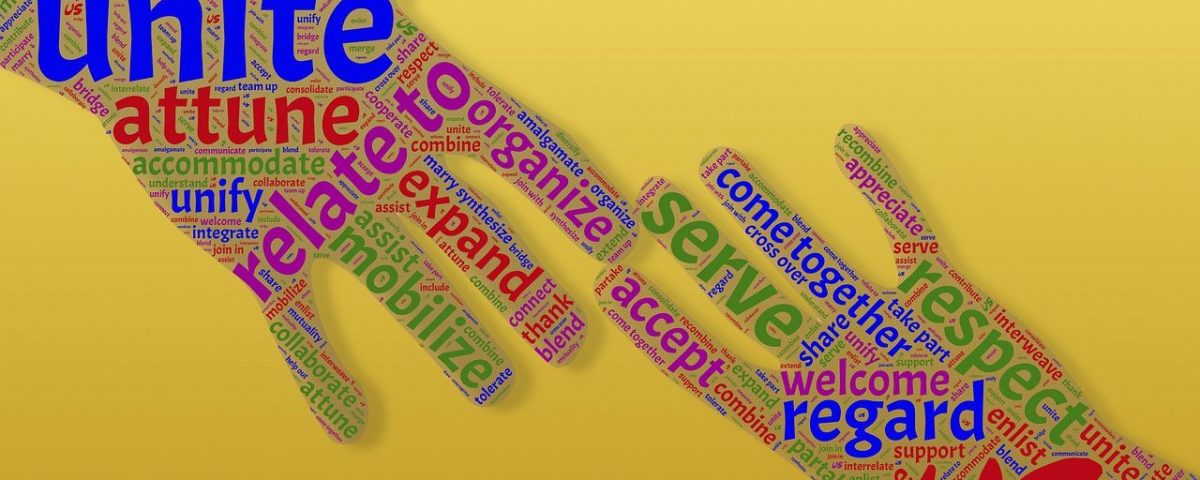
Diversity And Inclusion: Essential To All Non-Profits
August 7, 2017
Reclaiming Human Rights In The Trump Era: Lessons From “Women’s Rights Are Human Rights”
December 10, 2017Non-profits In A Trump Era: How To Build And Strengthen Coalitions

This is the second post in a series on building diversity in the non-profit sector. Despite the almost universal internal consensus about the importance of diversity, the facts paint a different picture — one of greater homogeneity than expected and recurring instances of structural bias. In short, the non-profit sector has a diversity deficit. This series will draw upon my experience as a diverse non-profit practitioner and leader to consider these challenges and to provide suggestions to both non-profits and the individuals who seek to contribute their talents to them.
[dt_divider style=”thin” /]
Leadership, or rather the lack of it, is a recurrent theme in our lives. The reality of this president and his administration raise innumerable questions. How are leaders created? How do we overcome the structural biases that have resulted in our current crisis of leadership? How do we cultivate and develop diverse leaders who embody our values of inclusion and justice? Given the administration’s hostility to multiculturalism and gender equality, it is urgent to seek answers and implement solutions to these fundamental leadership concerns.
In these unfathomably dark times, progressive non-profits are our conscience, and we rely upon their moral leadership. Yet, despite the near-universal commitment within our sector to diversity, non-profits too face a diversity deficit that is particularly acute for people of color and, to some extent, women. Indeed, a report issued just this past month shows that non-profit leadership remains predominantly white and isn’t likely to become more diverse any time soon. Whites fill 90% of board seats and CEO positions. In fact, more than a quarter of non-profit boards are all-white. Furthermore, these numbers have not varied significantly in the past 25 years.
The dissonance between ideals and reality is thus indeed harsh.
Persistent Structural Barriers for Diverse Leadership in Non-Profits
What accounts for the obvious lack of diversity at the leadership level in non-profits? Is there is scarcity of qualified leaders of color or women? Or are women and racially diverse leaders simply not interested in climbing the ranks — so that what we are actually witnessing is an “ambition gap”? Recent research confirms my personal experience and indicates that these reasons don’t account for the lack of such few leaders of color in the non-profit world.
In a report entitled “Race to Lead: Confronting the Non-Profit Racial Leadership Gap,” Sean Thomas-Breifield and Frances Kunreuther assert that people of color in non-profits face additional challenges that impedes career development. Their research reveals that more than one-third of people of color reported that their race or ethnicity had a negative effect on their opportunities. This is because professionals of color encounter overt discrimination or bias in how they are treated, and thwarted by assumptions of “cultural fit” and what leaders should look like. Latinos, Blacks, Asians, and other racial minorities indicate that they lack the role models and networks, including relationships with donors, necessary for success. Although the report does not attempt to address other aspects of diversity such as gender or disability, its findings would likely hold for these criteria too. In addition, my personal experience confirms many of these finding.
A Glimpse at the Complex Reality of a Diverse Leader
As a non-profit leader who is also an immigrant Muslim Asian woman of color, what has been my complex reality in the ideal-driven non-profit world?
In over two decades in this progressive sector, I have rarely had the pleasure of working with leaders of color or female leaders in “mainstream” non-profit organizations. However, I have collaborated with CEOs who are women and people of color when collaborating with organizations based on “identity politics,” such as those dealing with women’s rights, civil rights, racial justice, and immigrants’ rights. This reality makes a lot of sense in terms of the passions and interests of such leaders.
On occasion I have also found myself in a bind. I want to be accepted as a leader, irrespective of my race, gender, religion and ethnicity. Yet I know that my physical attributes define how others view me. As a leader, I must deal with preconceived notions of “cultural fit” (“Can an Asian immigrant and secular Muslim lead an organization that doesn’t look like her?”) as well as what a leader looks and sounds likes (“Since she speaks with an accent, will all our stakeholders understand all her words?”). I am often expected to represent people of my race, gender and ethnicity; however, if I buck these stereotypes, then I am “different” and so may have difficulty fitting in. Many of us are only too familiar with the view that women CEOs and leaders who are direct or don’t conform to gender roles and expectations are “aggressive” or “difficult.” In addition, I have been unable to find role models or mentors who could help me navigate this tricky terrain.
To optimize my performance, I have had to fine-tune my ability to “read” a variety of contexts. I have often had to assimilate into the dominant culture by leaving many parts of myself out of the workplace and, in the process, I have probably diluted my ability to maximize my impact. This need to adapt was perhaps greatest when I was in the position of leading nearly all-white teams without the benefit of an organizational culture that discussed and promoted diversity. For most of my non-profit leadership journey, I have had to work hard to overcome the often unstated or insidious biases that I have encountered. Initially, I felt that I alone had to do all the work of addressing these biases by changing how I dressed, spoke, or presented myself. Now I know better.
A Transformational Approach to Promoting Leadership-Level Diversity
Rather than placing the burden on diverse members of our community to overcome structural barriers on their own, I will focus my recommendations on the non-profit sector as a whole. Talented people seeking leadership roles in this field should find role models and an opportunity to network with like-minded colleagues. Similarly, individuals can also ensure they possess the full range of skill sets necessary for a leadership position and can refresh their learning and capacity to innovate. Yet what can be done beyond such measures to address institutional biases more widely?
To overcome the current diversity leadership deficit within non-profits, I recommend a three-step transformational and systems-wide approach:
#1. Challenge deep-seated societal biases internally.
This is much easier said than done because it may involve having uncomfortable conversations about racism, sexism, and privilege. It may also involve breaking new ground and confronting difficult personal realities. Ideally, such transformational work commences with current leadership initiating an open discussion about diversity and inclusion in a transparent manner that gains the trust of their entire organization. Such a dialogue should also result in a clear articulation of the benefits of diversity at all levels of the organization. Once this process is initiated, a non-profit needs to take action on multiple fronts. These steps include: educating boards; investing in so-called “soft” discussions around an organization’s culture and values and how it promotes or hinders diversity; ensuring that the organization’s leadership and human resources team strongly foster an inclusive culture that will attract more diverse candidates; and selecting executive search firms that have a proven track record of delivering a diverse pool. In all these activities, it is important never to single out current employees who are different or expect an employee from a minority group to speak on behalf of the entire group.
#2. Educate external stakeholders, particularly grant-makers and donors, on diversity.
All non-profits, particularly philanthropies and grant-making organizations, have an important role to play in stimulating discussions around diversity and fundraising. It is important to address the assumption that leaders of color are not able to raise money successfully by shifting to a conversation about how we can enable all diverse leaders to mobilize resources more effectively. Grant-makers could organize convenings amongst themselves on this issue and support fundraising training and fundraising networking for non-profit leaders. The boards of philanthropic entities could also review leadership-level diversity at a prospective grantee as a criterion for a new or ongoing grant.
#3. Recognize that not all “diverse” people are the same.
People of color, women, LGBTQI individuals, people of disabilities and others on the diversity spectrum are each unique. For example, even within the overarching category of people of color, there are likely to be enormous differences both between and within Blacks, Latinos and Asians. Moreover, as we know well by now, all women are not the same and there may be significant differences depending on race, ethnicity, and socio-economic status. Understanding the nuances of diversity will take time, and will need to be built into an organization’s culture. Diverse people also need to be engaged in this learning process.
Non-profits seek to change the world and most serve as beacons of light. To achieve the transformation we seek, it is crucial for us to be courageous. The challenge of creating a world more just world begins with our sector examining its own lack of diversity and inclusion and raising itself up to solve this daunting problem. Non-profits are trailblazers who have the ability to light a path forward to a world in which leaders of every stripe are able to serve and bring their full selves to this task.


